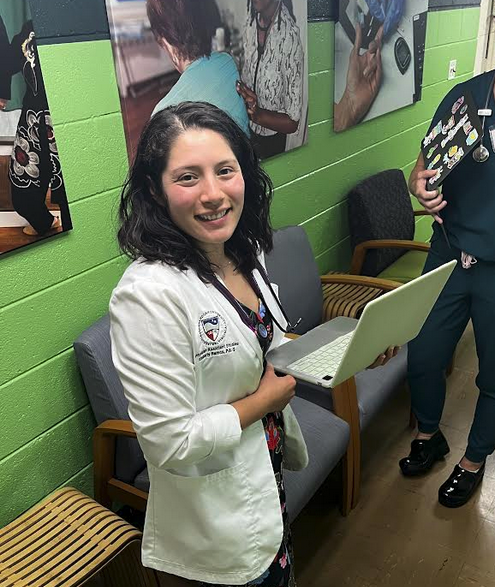PA Students Get Hands-On Experience - Part II
“I heard several times (from patients) that they tried to turn to others for help and healthcare to no avail, until they found Culmore Clinic, who provided what they needed. ”
This summer, we welcomed two Physician Assistant (PA) students completing clinical rotations at our Clinic. Last month we spotlighted one of the students, Hannah Morrison, PA-S, and wrote about the program with George Washington University PA Program. You can read that blog entry here.
This month, we are happy to feature the second, Kim Siguenza-Ramos, PA-S, from the Shenandoah University PA program. Here's what Kim had to say about her experience at Culmore Clinic.
What was the most meaningful patient interaction during your rotation with Culmore Clinic?
The most meaningful patient interaction I had was with a patient who was diagnosed with a blood cancer and we really couldn't do much for him at Culmore Clinic itself but were able to find appropriate care for him in an outside facility. When he came to the clinic, we spent the visit chatting and I got to know him and his life story. He was incredibly grateful for everything we had done to get him the appropriate care he required.
Could you describe a clinical challenge you encountered and how you managed or learned from it?
A challenge at Culmore Clinic, like many, is the quantity of resources available. While Culmore Clinic has many amazing resources (more than I originally thought, honestly), there are limitations. Since the prescription medications are free for patients, we don't have an unlimited supply of all medications available at our fingertips. Getting creative to figure out how to control chronic illnesses was definitely a challenge, but with the guidance from Culmore Clinic’s experienced team, I learned a lot of creative problem solving techniques.
How did this rotation influence your understanding of interprofessional collaboration in healthcare?
We all worked so closely with each other — interpreters, nurses, providers, and specialists — all to provide care for one patient. This care couldn’t be possible without every single person that was part of the care in one way or another.
What aspect of care during this rotation do you want share with others as you move on to future rotations?
I would share that there is a deep sense of patient centered care at this rotation. Some patients just needed someone to talk to and hear their life story. All the patients were extremely grateful. As I heard several times, they tried to turn to others for help and healthcare to no avail, until they found Culmore Clinic who provided what they needed.
What did you learn about the role of community-based clinics in filling healthcare gaps for marginalized populations?
Community-based clinics play a vital role to bridge the gap for patients who may otherwise go without care for their whole lives. It’s an accessible resource that patients can seek help without having to worry about their status in a country. Not only did patients find care but they also received education and a voice that advocates for them.

